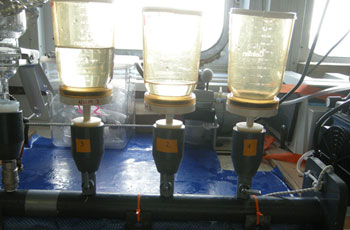Anton van Leeuwenhoek used his discovery of the microscope to see and describe the teeming life in a single drop of water. Robert Hooke, considered the English father of microscopy, confirmed Leeuwenhoek’s descriptions of tiny, living organisms in a drop of water and further refined the microscope. Soon scientists were examining tiny particles of life they had never before seen nor known existed prior to the invention of the microscope.
The microscope has an interesting place in water filter history. In mid-19th century London, where diseases ran rampant because of the tight quarters of the working class, city officials began to link the spread of cholera to poor drinking water quality (Baker & Taras, 1981). In areas where sand water filters had been installed, the outbreak of cholera had greatly decreased.
To further corroborate this conclusion, John Snow, a British scientist, was able to link several cholera deaths to water from the Broad Street Pump, a nearby water pump that had become contaminated by a leaking sewer (Baker & Taras, 1981). Using a microscope, he was able to confirm the presence of tiny cholera bacteria in the water. Ironically, this water came from a pump that had been noted throughout the city for its overall good taste and quality. This instance proved once more that the taste and visual clarity of water does not necessarily indicate purity.
As British government officials noted the effect of water quality on cholera outbreaks, both through Snow’s discovery and through the evidence of decreasing cases of cholera where sand water filters had been installed, they mandated the installation of sand water filters throughout the city. This mandate was one of the first instances of government regulation of public water and would set a precedent for municipal water systems.
Source: http://www.historyofwaterfilters.com
Dear User/Visitor! Please, answer on our questions: tick off one of the positions – your answer will make us able to improve our site and make it more interesting and useful!


